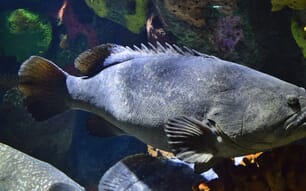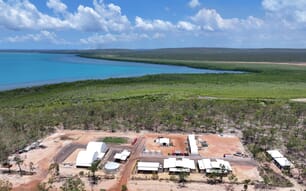The Northeastern Regional Aquaculture Center (NRAC) grant covered some of the costs of the study in 2004, 05 and 07.
A group of 38 wild caught mature fish, which had been introduced to captivity in 2001 were used for this study which began in 2004. Three diet types were tested, the “Control” diet which consisted of raw or frozen herring and frozen squid with added vitamins and two formulated feeds which were mixed into a paste and stuffed into collagen skins and fed as sausages. One of the feeds, the “Commercial” diet, was Breed M™, purchased from Inve Aquaculture and the second diet was formulated and manufactured in house and was fed to the fish in the “CCAR” treatment group.
Initially the fish were distributed between nine 3.65 m diameter tanks, three replicate tanks per diet treatment, in a seawater recirculation system and then in 2006, more broodstock fish were added to the trial and then in early 2007, the fish were moved to three 6.4 m diameter tanks in a purpose built facility.
The fish were ultrasound scanned at the start of the study to identify sex since many of the fish had not yet spawned in captivity. The fish were also weighed and then distributed between the treatment groups into the replicate tanks. Throughout the study between 2004 and 2007, the feed intake and growth of the fish was monitored. During each spawning season which occurred between January and May, the spawning rhythms of the fish were followed as closely as possible. Egg batches were stripped manually from ovulating females and each egg batch was fertilized with milt from at least two males from the same treatment group. Fertilization rate for each batch was assessed at the 8 cell
stage and hatching trials using microtitre well plates were attempted to assess hatch rate.
Samples of eggs from each batch were analyzed for fatty acid composition. Samples of each diet were analyzed for proximate composition, fatty acid composition and amino acid composition.
The diets were all well accepted by the fish and feed rates up to 8% per month were achieved for fish which started at an average weight of just under 23kg and finished at 3 final average weights of between 25.8 kg (Control) and close to 30kg (Commercial and CCAR). In the first year only 7 fish spawned out of 23 females. By 2006, this number had increased to 15 fish. Total egg production increased between 2004 and 2006 from just fewer than 4 million eggs to nearly 8 million. In 2007, the fish were moved to a new facility and egg production that year fell back to just under 5 million eggs. There were no significant differences in terms of specific fecundity (egg/kg) between treatments.
Egg quality in terms of fertilization rates was highly variable and generally quite low on average. In 2005 no viable eggs were collected from the Commercial group whilst the fertilization rate in the Control and CCAR groups that year were 75.4% and 73.7% respectively. In 2006 significant differences in terms of egg quality were detected when the Commercial group had a lower average fertilization rate (59.3% vs 94.7% (Control) and 72.1% (CCAR)). This difference was not carried through 2007 however and high quality egg batches were collected and reared through to juvenile from all treatment during the study.
Differences in certain fatty acid composition were detected but levels of key essential fatty acids (EFAs): arachidonic acid (ARA), ecosapentaenoic acid (EPA)and docosahexaenoic acid were not different across treatment groups suggesting that Atlantic halibut broodstock conserve these EFA levels in the eggs.
The implications of the results are discussed in terms of diet effects, diet costs and in terms of Atlantic halibut broodstock management.
February 2009




